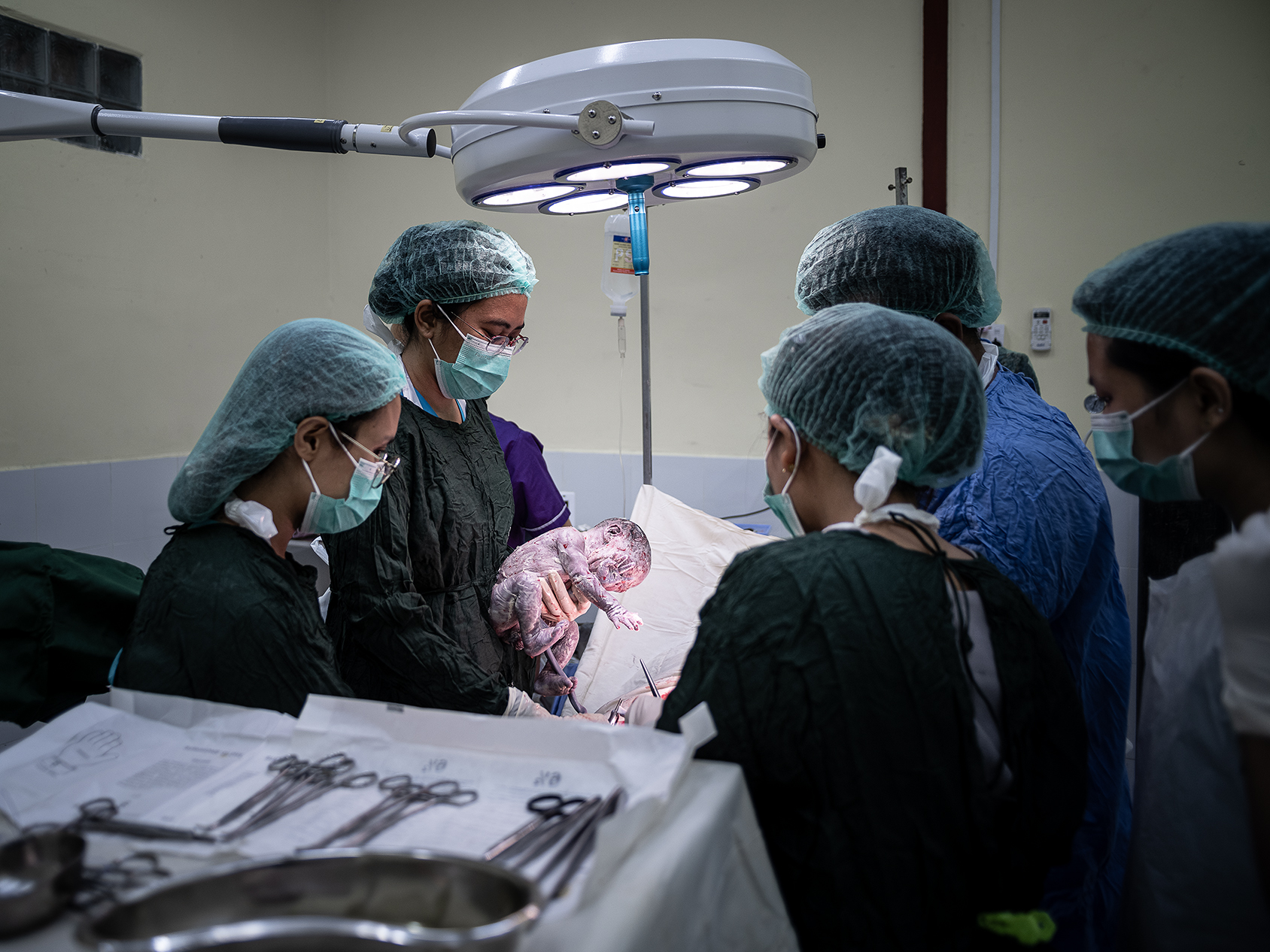Seconded By: Sylvia Laudien-Meo,
“The hardest part is playing games with life and death,” says Maui, the deputy chief commander of the Karenni Nationalities Defense Force (KNDF). He sits at a picnic table in the shadow of a large tree and opens a lukewarm beer. As the sun sets, the green mountainous jungle is bathed in a haze of golden light under a purple and pink sky. Like the vast majority of the anti-regime fighters in Eastern Myanmar, Maui has no military background; before the 2021 military coup, he was an organic farmer. “We love all living things: animals, plants, and insects,” he says, taking a generous sip. “Guns and ammunition are nothing but tools for us to defeat the government—the bullet is not our faith nor our future.”
This photo series offers an intimate look into the life and death of young anti-regime fighters from a civilian-rooted militia in Karenni State, Eastern Myanmar. Myanmar, known for experiencing the world’s longest civil war, has seen intensified violence since the 2021 coup and subsequent lethal crackdown on protesters. Despite being vastly outgunned, the anti-regime forces—comprising approximately 250 armed groups of diverse religions and ethnicities—are steadily gaining territory. Their struggle receives limited media coverage and has been dubbed a ‘forgotten revolution’ by mainstream outlets. However, for those enduring daily violence and displacement, the war remains anything but forgotten.
The location where Maui and his team are based serves as the first stabilization point after the frontline. After more than three years, medics not only became skilled at treating major trauma injuries but also developed a routine for washing and dressing the bodies of fallen soldiers to be sent back to their families. Grief and loss are part of daily life, as the bodies they clean or stitch often are friends. One doctor recalled: “A boy was brought in. He had died at the front; a piece of shrapnel pierced his heart. I knew he was dead, but I kept trying to revive him. He was so young, he hadn’t really gotten to know life; maybe he had never felt love or experienced hate. He knew nothing, yet gave up everything for this revolution.”
In this endless cycle of violence, displacement, and grief, children are born into a life of conflict. There is no escape: whoever managed to cross the border into Thailand fear arrest and extradition to the Burmese mainland, where the risk of imprisonment and execution await. That’s why, according to many, this fight cannot afford to fail—they either live free or die.

Toothbrush Warrior
A young fighter of the Karenni Army (KA) crosses the Salween River on his way to the Demoso frontline

New life
Dr. Yin examines the health of a newborn boy, moments before cutting the umbilical cord at the last operational hospital in Karenni State.

Dodged a bullet
Medics treat a KNDF fighter who was shot in his mouth near the Demoso Township frontline.

A clouded sky
A civilian takes cover as jets circle overhead, moments before two vacuum bombs are dropped on a graveyard near Demoso

Binding the dead
In the pitch-black night somewhere along the Demoso township frontline, medics clean and bind the body of a killed fighter

KNDF-05
Soldiers from KNDF battalion 5 sit in the back of a pickup truck on their way to the frontline.

3D printed revolution
A young KNDF fighter tests a self-made 3D printed drone used for carrying explosives




